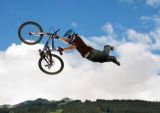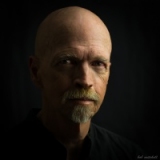- Forum
- General Discussion | Introductions | Off Topic Forum
- Photography General Discussion
- Exposure compensation in camera vs exposure adjusting in Lightroom or Photoshop
Exposure compensation in camera vs exposure adjusting in Lightroom or Photoshop
-

- KCook
- Photo Elder
-
- Canon EOS 50D and Olympus E-P5
- Followers: 1325
- Posts: 5410
-
Points:
32913
Post #253845
Kelly Cook
Post #253850
Post #253869
-

- Jeanne Merlo
- Snapobsessed
-
- Nikon D300
- Followers: 48
- Posts: 335
-
Points:
651
Post #253949
Joves wrote: Well from my understanding RAW does keep EC settings since they affect the exposure, or are actually part of the base data when you open them. The other data such as your say picture controls for the Jpegs are not in there, but EC is metering control not applied pre-processing. So getting the exposure right through EC is still needed. If you shoot Manual then you are applying EC when you over or under expose an image, with EC you have tweaked the Meter to do that automatically. You can also do it when shooting manually by say setting a - EC so that when you center the meter reading it actually is under exposing. Using software to heavily or having to use it too heavily, will crush your blacks, and if the whites are blown they stay that way because the RAW data has nothing to reference.
-

- Shane H
- Has the Hang of it
-
- Nikon D700
- Followers: 33
- Posts: 79
-
Points:
657
-

- Henry Peach
- Apprentice
-
- I currently use a 5DII or Sony Nex-3 most of the time.
- Followers: 50
- Posts: 2925
-
Points:
16
Post #258280
When you adjust exposure in processing you are manipulating that data. Processing software has no problem discarding data (darkening), but if you ask it to increase the data (brighten) then it has to make the new data up. It interpolates to fill in the gaps.
Think of your tonal range (white to black). You start with whatever you got with the exposure. In processing brightening is expanding the tonal range, and darkening is contracting it. When you expand the tonal range you get gaps. The software does it's best to fill in these gaps, and in the midtones and highlights it's usually not a problem, but the shadow end already suffers from a lack of exposure data, and when you stretch it image quality suffers: more noise, posterization, etc...
The difference between jpeg and raw is bit depth and double processing. If the camera is set on jpeg it will process the photo. Then if you go do it again it's possible you'll try to reverse things the in-camera software did. Or you may need data the in-camera software discarded. I think it's better to just do the processing once. Either in the camera or on a computer. Personally I think Lightroom/.Adobe Camera Raw kicks the Canon in-camera processing software's butt.
More bit depth means the camera's potential tonal range has more steps. Jpegs and older raw is 8 bit. 8 bit has almost twice as many potential steps in the tonal range than humans need to see a smooth gradient. So with 8 bit there is plenty of tonal range to fiddle with in a decent exposure. An underexposed photo has less tonal steps. At some point, usually high ISO and low light, you may end up with a tonal range close to or below the limit, and that may mean decreased technical image quality. Many current cameras are higher than 8 bit in raw, giving them more room to wiggle, but somewhere they have their limit too.
Under expose in camera and brighten in processing: Generally decreases image quality, although at lower ISOs and when processing raw, it is amazing what you can get away with. At higher ISOs brightening the image much in processing will probably result in more noise, and possibly posterization in the shadows.
Overexpose in camera and darken in processing: Generally increases image quality by reducing noise. This assumes you haven't gone too far and blown the highlights. Today's cameras are so clean looking to start with that this improvement won't be noticeable in most of the normal ISO range.
Make test prints and see with your own eyes. The rules aren't exactly the same for everybody. You have to figure out what techniques suit your style and goals.
-

- KCook
- Photo Elder
-
- Canon EOS 50D and Olympus E-P5
- Followers: 1325
- Posts: 5410
-
Points:
32913
-

- Sawyer
- Master of the Lens
-
- Canon 5D Mark II
- Followers: 248
- Posts: 1862
-
Points:
13181
Post #258338
Henry Peach wrote: When you adjust exposure in the camera you are increasing or decreasing the amount of actual scene data captured.
When you adjust exposure in processing you are manipulating that data. Processing software has no problem discarding data (darkening), but if you ask it to increase the data (brighten) then it has to make the new data up. It interpolates to fill in the gaps.
Think of your tonal range (white to black). You start with whatever you got with the exposure. In processing brightening is expanding the tonal range, and darkening is contracting it. When you expand the tonal range you get gaps. The software does it's best to fill in these gaps, and in the midtones and highlights it's usually not a problem, but the shadow end already suffers from a lack of exposure data, and when you stretch it image quality suffers: more noise, posterization, etc...
The difference between jpeg and raw is bit depth and double processing. If the camera is set on jpeg it will process the photo. Then if you go do it again it's possible you'll try to reverse things the in-camera software did. Or you may need data the in-camera software discarded. I think it's better to just do the processing once. Either in the camera or on a computer. Personally I think Lightroom/.Adobe Camera Raw kicks the Canon in-camera processing software's butt.
More bit depth means the camera's potential tonal range has more steps. Jpegs and older raw is 8 bit. 8 bit has almost twice as many potential steps in the tonal range than humans need to see a smooth gradient. So with 8 bit there is plenty of tonal range to fiddle with in a decent exposure. An underexposed photo has less tonal steps. At some point, usually high ISO and low light, you may end up with a tonal range close to or below the limit, and that may mean decreased technical image quality. Many current cameras are higher than 8 bit in raw, giving them more room to wiggle, but somewhere they have their limit too.
Under expose in camera and brighten in processing: Generally decreases image quality, although at lower ISOs and when processing raw, it is amazing what you can get away with. At higher ISOs brightening the image much in processing will probably result in more noise, and possibly posterization in the shadows.
Overexpose in camera and darken in processing: Generally increases image quality by reducing noise. This assumes you haven't gone too far and blown the highlights. Today's cameras are so clean looking to start with that this improvement won't be noticeable in most of the normal ISO range.
Make test prints and see with your own eyes. The rules aren't exactly the same for everybody. You have to figure out what techniques suit your style and goals.
WOW
Canon 5D Mark II | Canon 70-200mm f/2.8L IS USM | Canon 35L | Sigma 85 1.4 | Helios 44M-6 58mm(M42) | Zeiss 50mm 1.4 (C/Y) | Canon 135L | (2) 430EX II
-

- Lillian Harges
- Has the Hang of it
-
- Nikon D700
- Followers: 6
- Posts: 85
-
Points:
0
-

- hghlndr6
- Master of the Lens
- Nikon: P510, D600, D7100
- Followers: 1222
- Posts: 1650
-
Points:
28119
Post #261561
Henry Peach wrote: When you adjust exposure in the camera you are increasing or decreasing the amount of actual scene data captured.
When you adjust exposure in processing you are manipulating that data. Processing software has no problem discarding data (darkening), but if you ask it to increase the data (brighten) then it has to make the new data up. It interpolates to fill in the gaps.
Think of your tonal range (white to black). You start with whatever you got with the exposure. In processing brightening is expanding the tonal range, and darkening is contracting it. When you expand the tonal range you get gaps. The software does it's best to fill in these gaps, and in the midtones and highlights it's usually not a problem, but the shadow end already suffers from a lack of exposure data, and when you stretch it image quality suffers: more noise, posterization, etc...
The difference between jpeg and raw is bit depth and double processing. If the camera is set on jpeg it will process the photo. Then if you go do it again it's possible you'll try to reverse things the in-camera software did. Or you may need data the in-camera software discarded. I think it's better to just do the processing once. Either in the camera or on a computer. Personally I think Lightroom/.Adobe Camera Raw kicks the Canon in-camera processing software's butt.
More bit depth means the camera's potential tonal range has more steps. Jpegs and older raw is 8 bit. 8 bit has almost twice as many potential steps in the tonal range than humans need to see a smooth gradient. So with 8 bit there is plenty of tonal range to fiddle with in a decent exposure. An underexposed photo has less tonal steps. At some point, usually high ISO and low light, you may end up with a tonal range close to or below the limit, and that may mean decreased technical image quality. Many current cameras are higher than 8 bit in raw, giving them more room to wiggle, but somewhere they have their limit too.
Under expose in camera and brighten in processing: Generally decreases image quality, although at lower ISOs and when processing raw, it is amazing what you can get away with. At higher ISOs brightening the image much in processing will probably result in more noise, and possibly posterization in the shadows.
Overexpose in camera and darken in processing: Generally increases image quality by reducing noise. This assumes you haven't gone too far and blown the highlights. Today's cameras are so clean looking to start with that this improvement won't be noticeable in most of the normal ISO range.
Make test prints and see with your own eyes. The rules aren't exactly the same for everybody. You have to figure out what techniques suit your style and goals.
- Forum
- General Discussion | Introductions | Off Topic Forum
- Photography General Discussion
- Exposure compensation in camera vs exposure adjusting in Lightroom or Photoshop
Latest Reviews
The Panasonic G9 II is a 25.2-megapixel micro four thirds camera with numerous features that make it punch out of its weight class, like 779 AF points, 5.8K video, and weather sealing.
The Fujifilm XT5 is a 40MP mirrorless camera capable of 6.2K video at 30p. With those specs, it’s an ideal choice for photographers needing a camera to pull double duty for imaging and video.
The Canon EOS R100 is an entry-level mirrorless camera introduced in 2023. But just because it’s an entry-level camera doesn’t mean it’s a bare-bones camera. Find out why in this review!
Nikon’s retro-looking Nikon Zfc is anything but retro. Under its classic body is a host of features and amenities that make it a worthwhile compact mirrorless camera for 2024.
Forum Top Posters
-
1TCav 6 posts
-
2Ruby Grace 4 posts
-
3Scotty 3 posts
-
4Street Shark 3 posts
-
5Chris Briggs 2 posts
-
6Sassy Girl 2 posts
-
7Carter Gledhill 2 posts
-
8amirahusse... 2 posts
-
9James L 2 posts
-
10Esseff 2 posts
Latest Articles
The Panasonic G9 II is a 25.2-megapixel micro four thirds camera with numerous features that make it punch out of its weight class, like 779 AF points, 5.8K video, and weather sealing.
Cinematic photography is an interesting genre that combines photographic and videographic skills along with effective storytelling techniques. The result? Highly impactful images!
Newborn photography requires skill, the right gear, and a lot of patience. This beginner’s guide discusses critical topics that will help you be more prepared for before, during, and after the shoot.
To fill the frame means to expand the footprint of the subject in your shot. Get in close, zoom in, crop the image, or use other techniques to bring the subject to the forefront.
With these simple yet effective beginner photography tips, you can avoid some of the common mistakes beginners make and get improved results with your images.
Urban photography is a genre showcasing features in urban settings. You can photograph people, architecture, mass transit, and many other subjects. Learn how to do so in this guide!
The Nikon D850 might be an older DSLR, but it was ahead of its time when it debuted in 2017. That means it still has plenty of firepower to compete with today’s powerful mirrorless cameras.
The best beginner camera isn’t the same for everyone. That means having choice is of the utmost importance. In this guide, explore five excellent beginner camera options for 2024 and beyond.
















